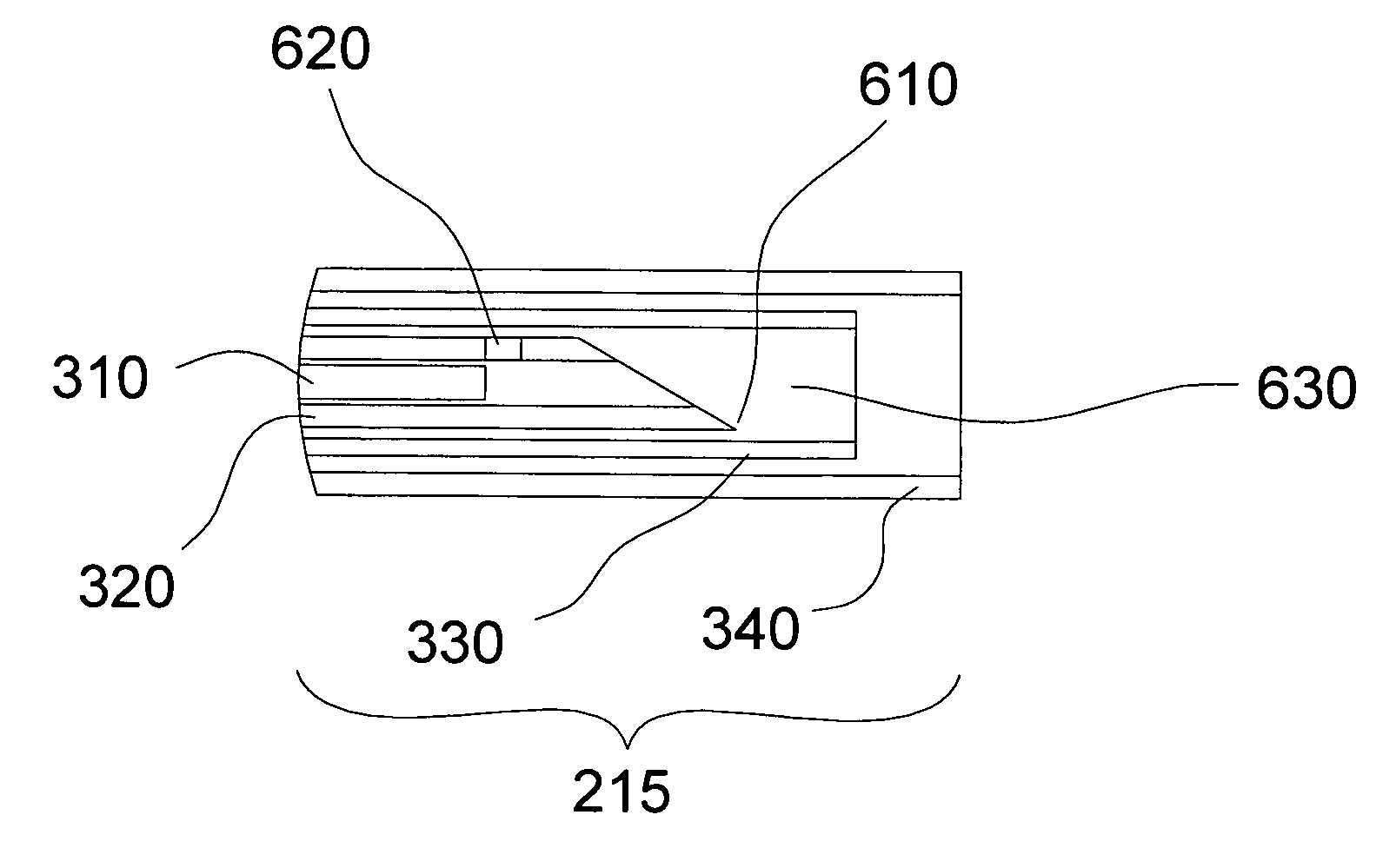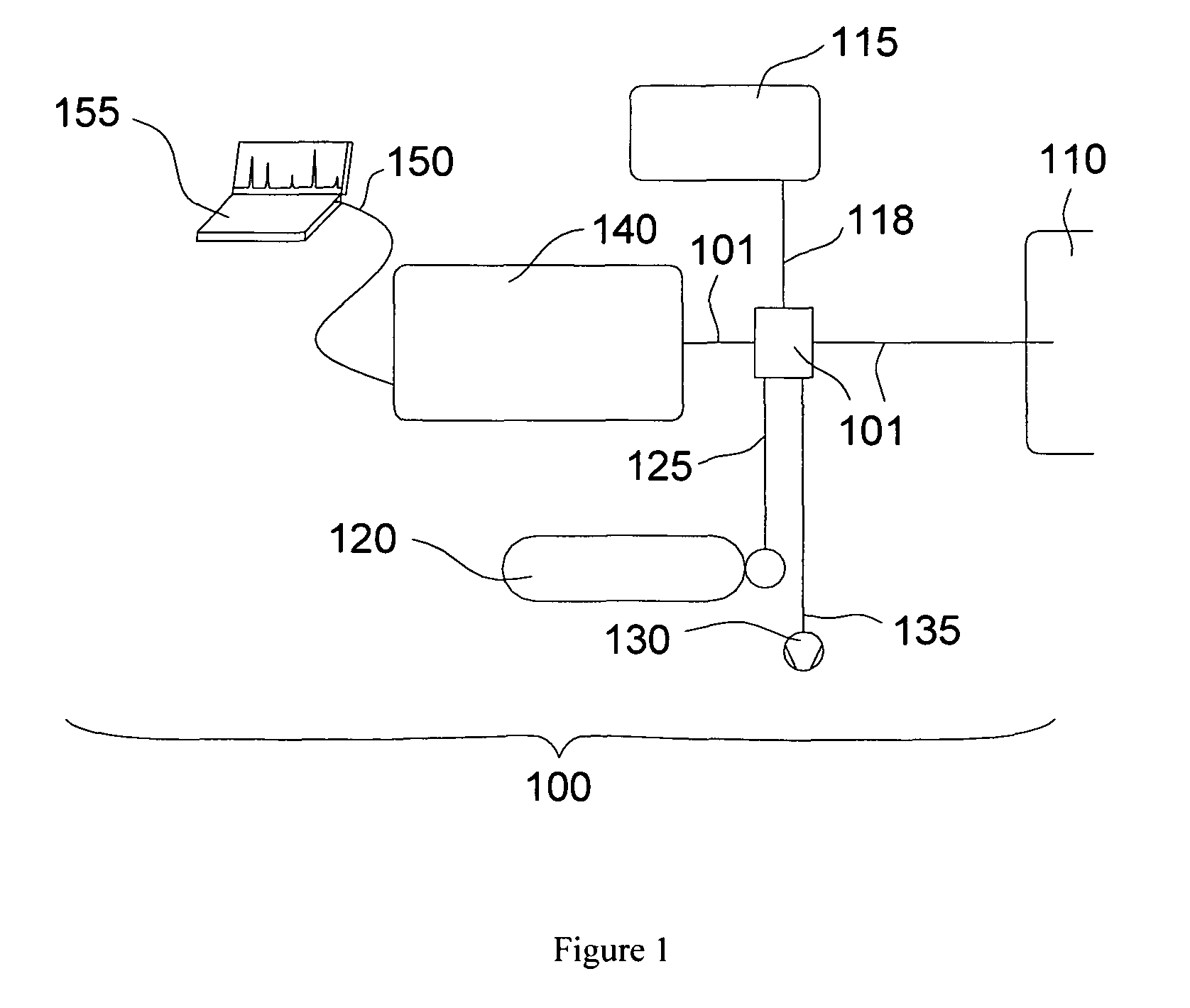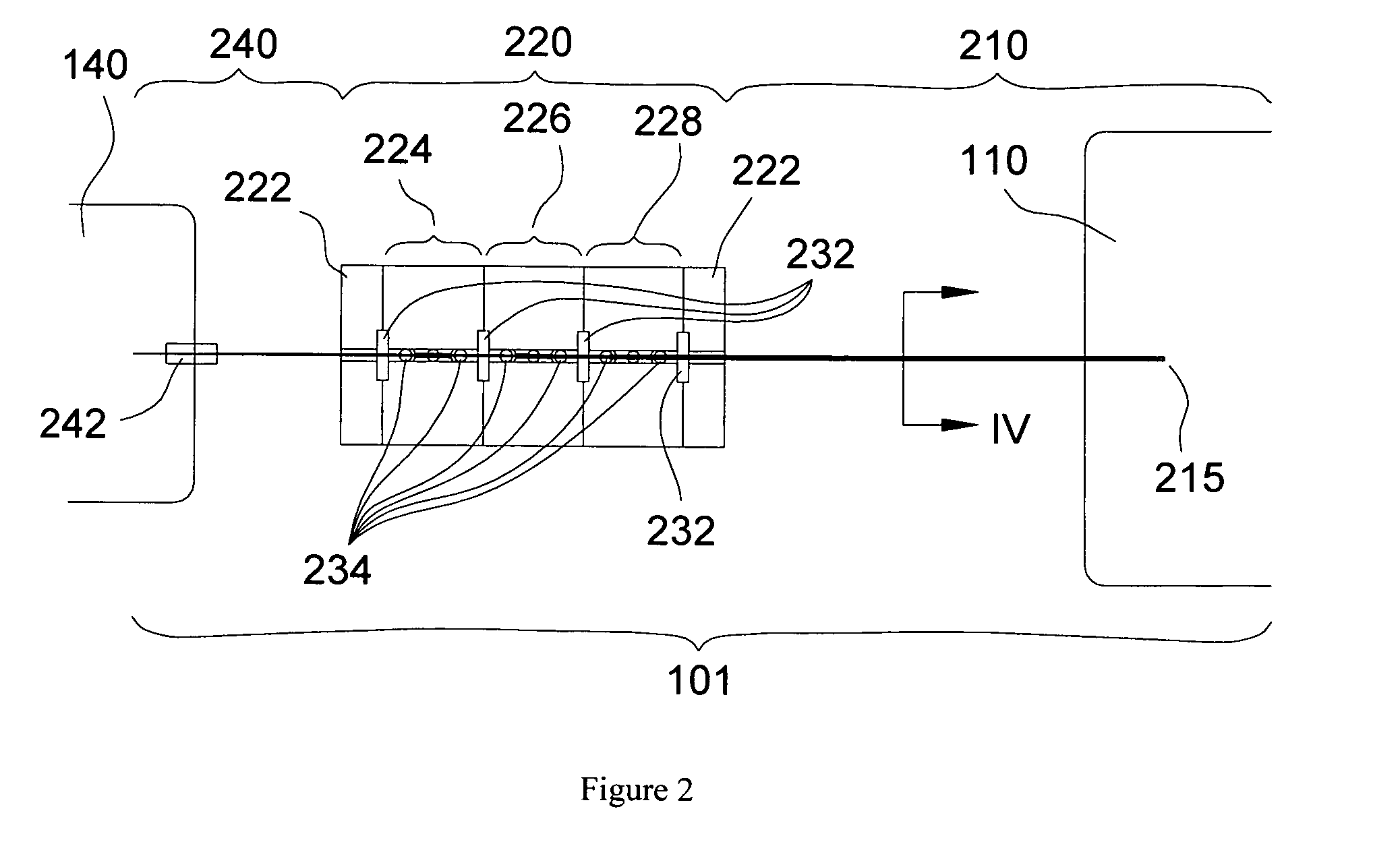Axial-geometry micro-discharge detector
a detector and axial geometry technology, applied in the field of detectors, can solve the problems of complex transport of sampled gas from the source, limitations of other detector technologies using atomic emission techniques, and limitations on use,
- Summary
- Abstract
- Description
- Claims
- Application Information
AI Technical Summary
Benefits of technology
Problems solved by technology
Method used
Image
Examples
Embodiment Construction
[0030]FIG. 1 illustrates a schematic of a detector system 100. The detector system 100 consists of a detector 101, power supply 115, power cord 118, gas supply 120, gas supply tube 125, vacuum pump 130, vacuum tube 135, optical sensing device 140, communication cord 150, and computer 155. The detection target 110 is any gaseous source in need of monitoring specific properties of the gas.
[0031]The power supply 115 is a small battery powered device, with 2 C-cells providing enough power for twenty-four hours of continuous operation. Alternatively, the power supply 115 is sized and receives the power required to operate the needs of detector system 100. A stabilizing ballast resistor (ranging from 100 k to 10M Ohms) is also included in the electrical circuit. The computer 155 is a laptop. Alternatively, the computer 155 is a more compact integrated electronics included in the detection system enabling analysis in a stand alone portable instrument. As an additional alternative, the comp...
PUM
| Property | Measurement | Unit |
|---|---|---|
| pressures | aaaaa | aaaaa |
| temperatures | aaaaa | aaaaa |
| temperature | aaaaa | aaaaa |
Abstract
Description
Claims
Application Information
 Login to View More
Login to View More - R&D
- Intellectual Property
- Life Sciences
- Materials
- Tech Scout
- Unparalleled Data Quality
- Higher Quality Content
- 60% Fewer Hallucinations
Browse by: Latest US Patents, China's latest patents, Technical Efficacy Thesaurus, Application Domain, Technology Topic, Popular Technical Reports.
© 2025 PatSnap. All rights reserved.Legal|Privacy policy|Modern Slavery Act Transparency Statement|Sitemap|About US| Contact US: help@patsnap.com



